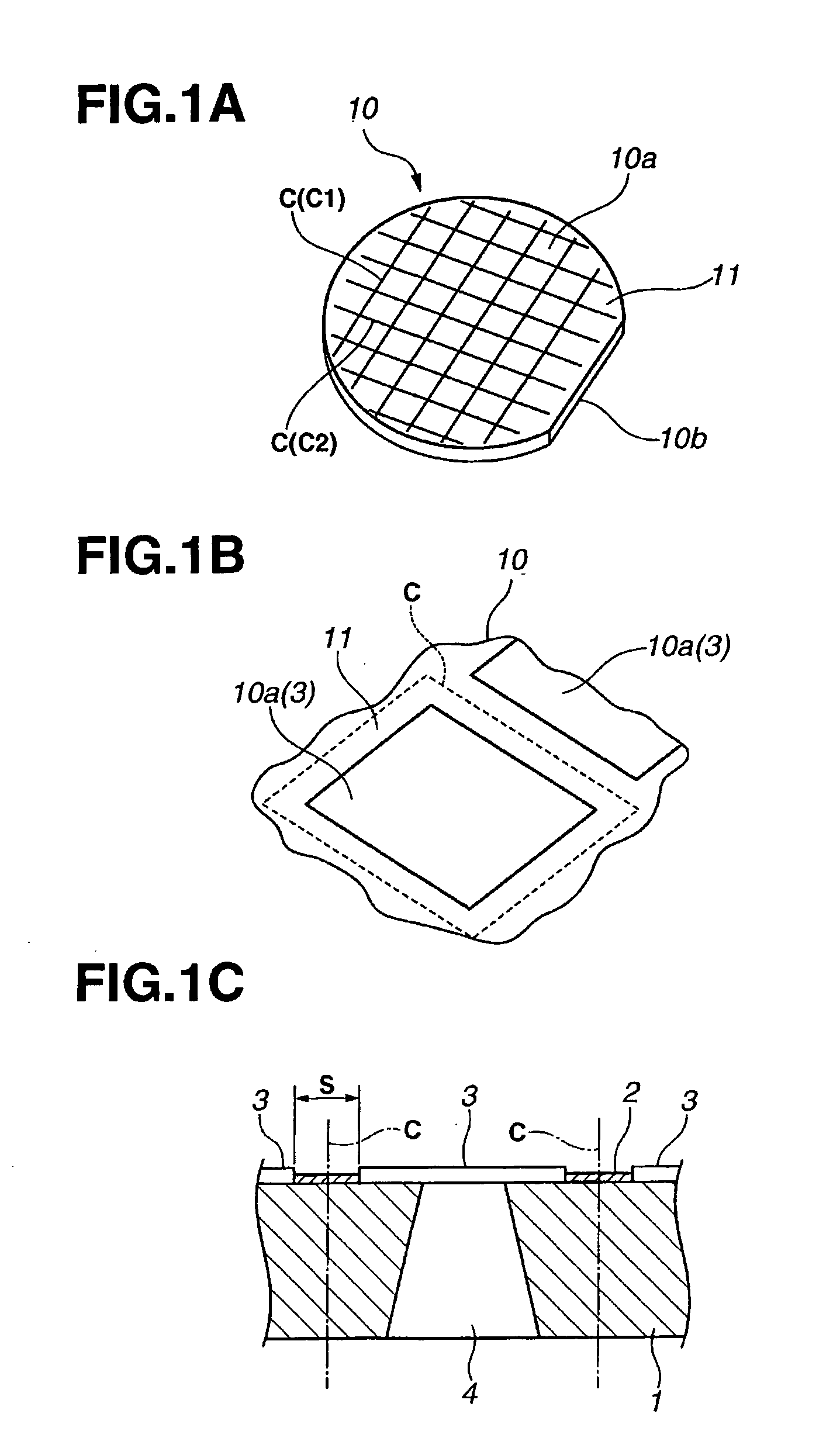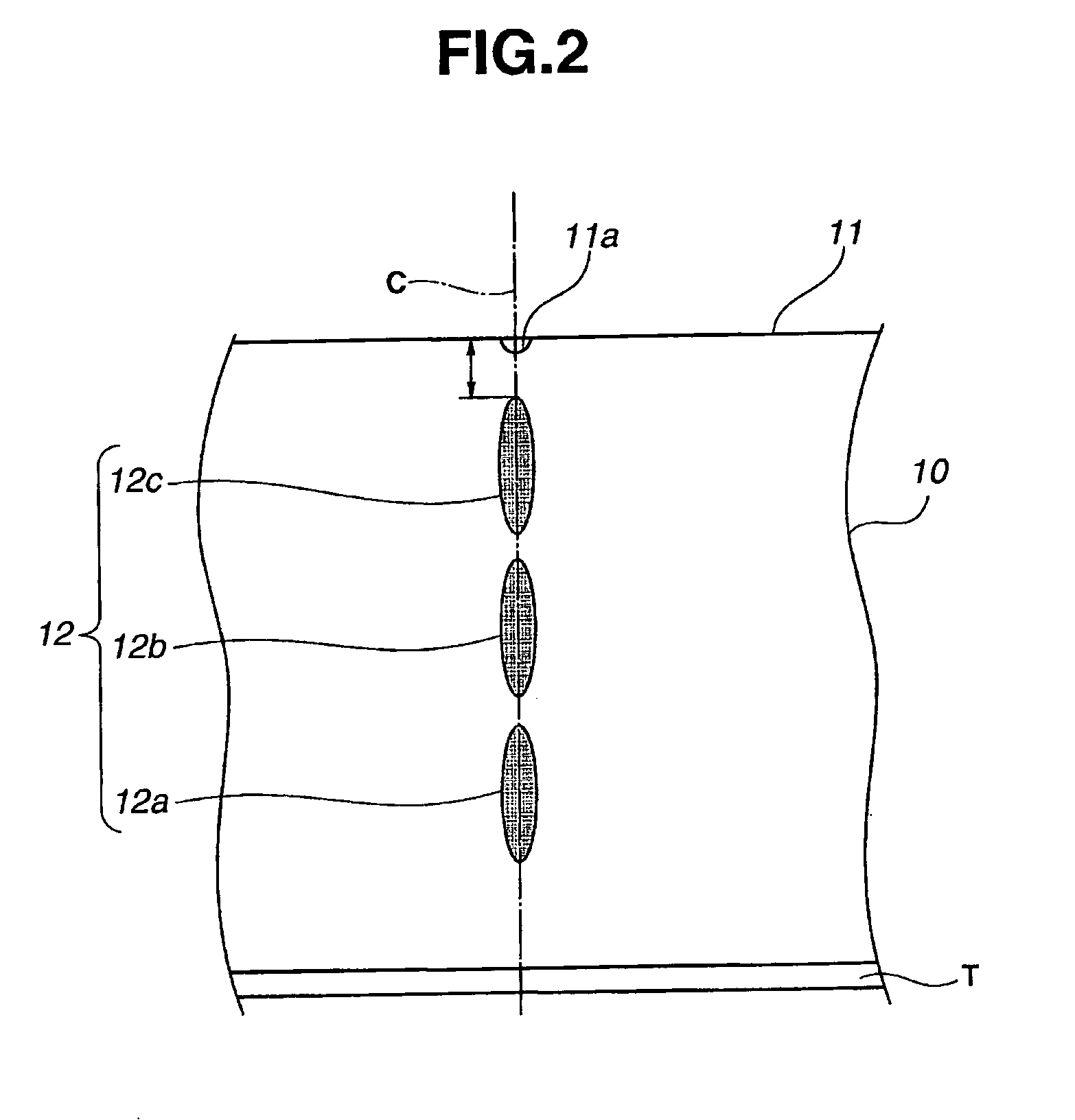Laser cutting apparatus and laser cutting method
a laser cutting and laser cutting technology, applied in metal working equipment, welding/soldering/cutting articles, manufacturing tools, etc., can solve the problems of limited starting point for cutting, serious affecting the reliability of function elements, and limited logic circuits
- Summary
- Abstract
- Description
- Claims
- Application Information
AI Technical Summary
Benefits of technology
Problems solved by technology
Method used
Image
Examples
Embodiment Construction
[0032] Exemplary embodiments of the invention will be described in detail below with reference to the drawings. However, the dimensions, materials, shapes and relative positions of the constituent parts shown in the embodiments should be changed as convenient depending on various conditions and on the structure of the apparatus adapted to the invention, and the invention is not limited to the embodiments described herein.
[0033] Description of the embodiments is started by explaining a cutting method of using a silicon substrate 10, on the surface of which a plurality of logic element portions 10a serving as semiconductor device portions are formed as shown in FIG. 1A, as an example of a material to be cut, and separating the silicon substrate 10 into the logic element portions 10a as device chips.
[0034] As shown in FIG. 2, laser light is concentrated to a light concentrating point at a predetermined depth inside the substrate from a surface 11 thereof to thereby form an internal p...
PUM
| Property | Measurement | Unit |
|---|---|---|
| thickness | aaaaa | aaaaa |
| thickness | aaaaa | aaaaa |
| depth | aaaaa | aaaaa |
Abstract
Description
Claims
Application Information
 Login to View More
Login to View More - R&D
- Intellectual Property
- Life Sciences
- Materials
- Tech Scout
- Unparalleled Data Quality
- Higher Quality Content
- 60% Fewer Hallucinations
Browse by: Latest US Patents, China's latest patents, Technical Efficacy Thesaurus, Application Domain, Technology Topic, Popular Technical Reports.
© 2025 PatSnap. All rights reserved.Legal|Privacy policy|Modern Slavery Act Transparency Statement|Sitemap|About US| Contact US: help@patsnap.com



